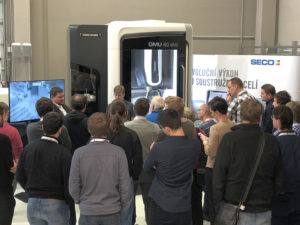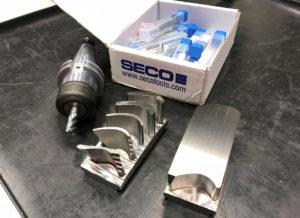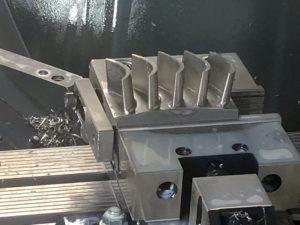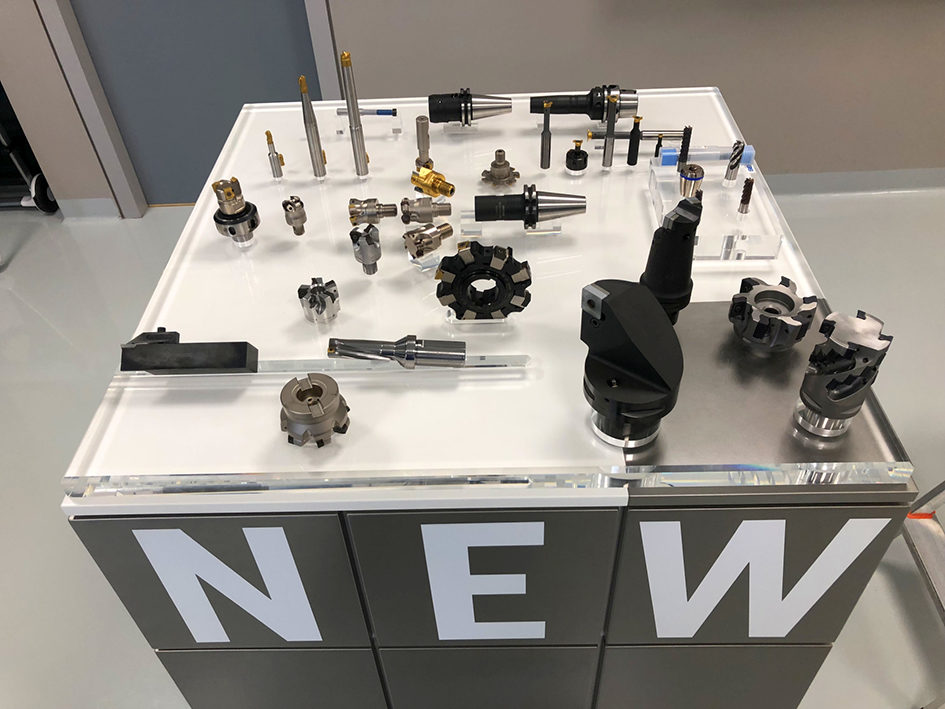Over 30 visitors from leading advanced manufacturing and technology companies based in the Czech Republic attended CGTech’s first VUE 2018 (VERICUT Users Exchange) event, hosted by SECO at the company’s Technical Centre. The technical staff from CGTech’s country reseller, Axiom Tech, used the event to promote the new FORCE module as well as providing customers with a comprehensive review of the latest release of VERICUT, Version 8.1, the world’s most advanced independent CNC machine tool simulation and optimisation software.
Shown for the first time overseas, CGTech’s recently launched physics-based FORCE module grabbed centre stage at SECO’s advanced Technical Centre facility in Brno. Here, live cutting demonstrations of the software enhanced machining cycles for hard metals were run on the company’s DMG Mori DMU 60 eVo 5-axis machining centre to highlight the benefits of FORCE in use on the shopfloor.

FORCE is a software module within VERICUT that uses a physics-based optimisation method to determine the maximum reliable feed rate for a given cutting condition based on four factors. They are force on the cutter, spindle power, maximum chip thickness, and maximum allowable feed rate. It calculates ideal feed rates by analysing tool geometry and parameters, material properties of the stock and cutting tool, detailed cutting tool edge geometry, and of course VERICUT cut-by-cut contact conditions.
The software excels in difficult to machine materials, and especially complex multi-axis cuts such as 5-axis flank milling. Initial users of this technology are already seeing productivity improvements of up to 50 per cent. FORCE represents the current apex of machining optimisation because the software uses actual data for cutting tool forces and spindle power readings to calculate maximum chip thickness and feed rate. So, it offers a number of technical benefits for machined parts within aerospace, automotive, industrial and other markets that use automated machining.
With the material properties of the component and the cutting conditions also considered, FORCE determines the optimum speeds for a cutting process and makes the CNC machine cut in the most efficient, fast and reliable way. This provides significant benefits when applied to any precision machining operation where challenging materials, such as titanium, high nickel superalloys such as Hastelloy, Inconel and Waspaloy, duplex and stainless steel, and any work hardening materials, that are typically used in mould & die and aerospace component production.

Petr Zugar, Managing Director, Seco Tools CZ, says: “Working with CGTech to promote VERICUT FORCE provides an opportunity for SECO Tools to support the goals of every industry sector; improved efficiency and productivity. We believe the major benefit for our customers is reduced production costs – in terms of both the cutting tools needed and especially capacity of existing machine tools. In this sense, we provide our customers with a ‘significant competitive advantage’. They can produce parts faster and at a lower cost than the competition.”
The machining demonstration created jointly by SECO and Axiom Tech reflected the typical challenges faced by aerospace companies, with a section of blisk (blade on disk) produced from titanium. A number of cutting tools from a SECO programme were applied with advanced machining strategies, including plunge and high-speed milling. Across the blisk machining operation a time saving of around 19 per cent was achieved by FORCE.
Axiom Tech also provided everyone at the event with an overview of the changes and improvements offered by VERICUT Version 8.1 which is designed to run on 64-bit Windows on Windows 7 and Windows 10 computers. This latest release is focused on the various tools that can increase NC programmer efficiency, reduce production time, and detect costly errors before going to the shopfloor.

Country Sales Manager, Lee Fowkes, concludes: “FORCE provides a ‘purple patch’ for companies using machine tools. It can increase the life expectancy of the cutting tools; improve the post-processed cutting tool path from the CAM system, leading to shorter machining cycle times; look after the machine tool’s structural elements, as each cut is analysed the software minimises any ‘shock loads’ creating a smoother but quicker cutting cycle.”





